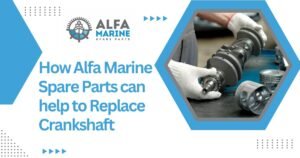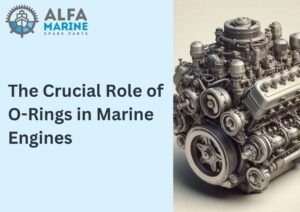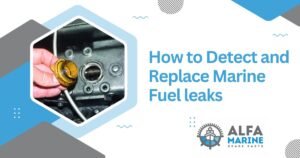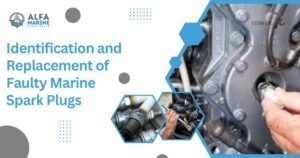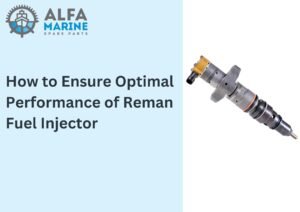Engine health monitoring is a critical digital data-driven technology in the engine control room. It is a computerised module integrated into the entire equipment setup in the engine room and other areas of the ship.
Continuous monitoring of the mechatronic devices on the vessel is an eminent part of engine health management (EHM). The real-time data collected from the monitoring system keeps the marine engineers informed about early signs of fault in the marine machinery.
Today, we offer an overview of equipment health monitoring systems and their significance in modern vessels.
Understanding Marine Engine Health Monitoring
The health monitoring module in modern vessels definitively consists of a complex software framework integrated into compatible hardware devices (sensors). This combined infrastructure is connected to the engine and other machinery, enabling marine engineers to track the performance and status of the marine parts.
This comprehensive diagnostic system is beyond the traditional engine simulators and physics-based mechanisms in offering fast, accurate analytics to detect critical issues.
How Does the Engine Condition Monitoring System Work
Modern marine engines support seamless connectivity to dynamic sensors to track anomalies in functionality. These sensors generate signals to denote any fluctuation in equipment performance. Engine health monitoring sensors leverage fault diagnosis by tracking vibrations, ultrasounds, electronic signals, temperature, pressure, and other parameters.
This is a comprehensive controlled sensing system to identify diverse problems. Here is a synopsis of various types of sensors and their uses
#1. Dynamic Pressure Sensors
These sensors function on the principle of the Piezoelectric effect used for measuring dynamic stress, fluid level in the tanks, combustion, and cavitation.
#2. Vibration Sensors
These sensors detect misalignment and loose fitting in various engine parts. It also records the vibration in the equipment due to wearing issues in the gearbox and roller bearings.
#3. Motor Current Sensors
These sensors are located in the motor control centre to record faults in electricity supply, rotor functioning, rotor bar lapses, and winding.
#4. Thermal Imaging Sensors
These engine health monitoring sensors implement a non-invasive infrared technique for contactless temperature recording.
#5. Oil Sensors
There are various types of oil sensors on a marine vessel. The main function of an oil sensor is to monitor the condition of the engine oil. It can measure the purity of the lube oil in the bearing and gears. The sensor detects the particulates and debris in the lubrication system. This sends alerts to the vessel operator when the lube oil needs replacement.
#6. Temperature Sensors
There are various types of temperature sensors addressing diverse applications on a ship. A thermistor is a type of temperature sensor to measure the temperature of the motor winding. A thermocouple is another automated equipment monitoring sensor compatible with recording high-temperature measurements in the boiler, incinerator, etc.
#7. Ultrasonic Sensors
These sensors can detect the level of friction in the roller bearing and various electrical faults.
#8. Transmission Speed Sensors
The functioning of the speed sensors is correlated to the vibration sensors. It records the vibrations and speed of wheel rotation. The sensors also monitor the speed of the turbocharger spinning and the angular position of the shaft.
Importance of Automated On-site Marine Equipment Monitoring
The engine room in a ship comprises multivariate machinery and electronic devices. The complex structures become vulnerable to faults due to long hours of uninterrupted operations, exposure to high temperatures, and severe working environments.
The sensors in the engine room send electrical signals to the electronic control unit (ECU) about specific issues. Continuous equipment health monitoring helps marine professionals to deal with issues at the earliest. Identifying malfunctioning marine parts and their exact position can prevent costly equipment from damage and reduce downtime on overhauls. Moreover, if the minor issues are addressed earlier, it helps to eliminate expenses on repairs and replacement.
Integrate Futuristic Monitoring Systems to Your Marine Equipment Settings
Alfa Marine Spare Parts is the leading marine parts supplier offering fast shipping worldwide. We sell OEM display panels from Caterpillar, Cummins, John Deere, and other brands. Please get in touch with our sales executive to explore our entire range of engine health monitoring systems.


